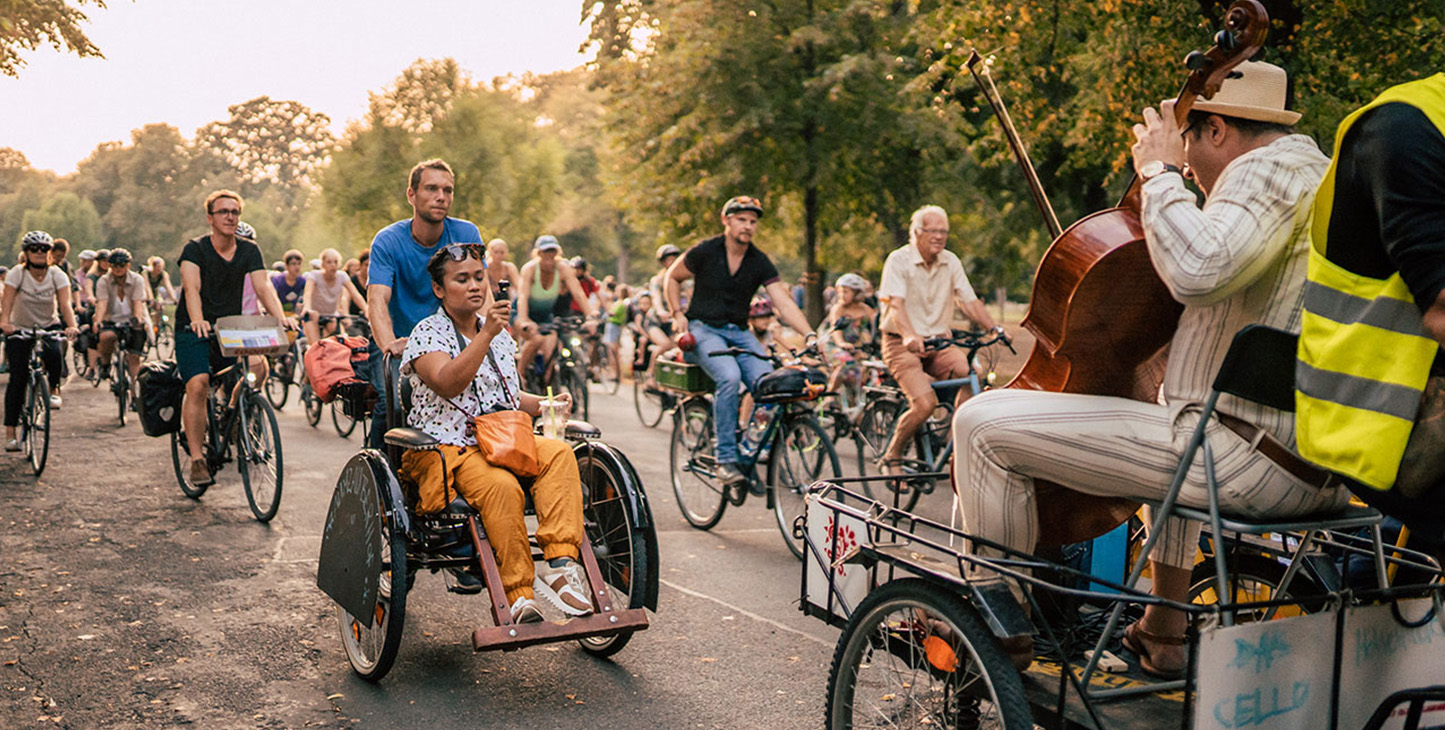Leipzig in transition: How the bicycle became a catalyst for sustainable urban transformation

Leipzig’s history has been one of change and transition. From desolate urban brownfields to lively neighbourhoods, from open-cast coal mines to lakescapes, the German city underwent a striking process of urban regeneration in just 30 years. Today, it is one of Europe’s most dynamic and liveable cities.
Leading the transition
Leipzig’s urban development is deeply intertwined with its unique history. Its citizens played a decisive role in German reunification, providing the heart and engine of epochal changes. The Peaceful Revolution of 1989, which ultimately led to the fall of the Berlin Wall and communist dictatorship across Europe, began in Leipzig.
After German reunification, the city tumbled into decline, its population plummeting to 437,000 in the mid-1990s. Since then, Leipzig has been reinventing itself at a rapid pace. The turn of the century, a pivotal period for the German city, saw Leipzig’s economy gather momentum, the implementation of ambitious urban development policies and people flooding back into the city. Today, its creative buzz and vibrant street life shape the image of the city.
Over the past decades, Leipzig’s streetscape changed continuously from a car dominated street design towards more sustainable mobility. A working group on cycling development initiated by the citizens of Leipzig in 1989 accompanied this process. The city now boasts a cycling network of 536 km with a cycling modal share of 19%. Moreover, a recent study shows that 79% of all trips to Leipzig’s city centre are made by public transport, on foot or by bike. In 2018, the city introduced Leipzig’s Mobility Strategy 2030, laying out a roadmap to increase the combined modal share of walking, cycling and public transport to 70%.
In recognition of its sustainable urban development policies, its progress and further ambitions for cycling, Leipzig was chosen as the 2023 host of the world’s leading cycling conference, Velo-city 2023.
Towards climate neutral economies

In October 2022, Leipzig adopted its “Energy and Climate Protection Program 2030”, paving the way to climate neutrality by 2040. The plan is comprised of almost 60 complex measures, ranging from the further development of the local public transport and cycling network to energy-efficient building renovation and the expansion of renewable energies. The city administration aims to reduce CO2 emissions from 5.18 tons per capita in 2020 to 0.25 tons per capita by 2040.
The plan is built on the following ten pillars:
- Sustainable transport
- Sustainable municipal energy and heat supply
- Sustainable land use planning
- Climate-friendly green-blue infrastructure
- Climate-friendly neighbourhood development
- Climate-neutral city administration
- Regional circular economy
- Sustainable nutrition
- Climate education
- Climate protection offensive
Creating mobility systems of the future now

From July to December 2022, the City of Leipzig is putting cargo bike sharing to the test. With 890 users and an average of 20 rentals per day, the scheme is already a huge success.
The fleet counts a total of 30 cargo bikes, including nine e-cargo bikes and one inclusion bike for wheelchair users. The project was implemented in cooperation with TINK, nextbike and the courier union fulmo. With the introduction of this new scheme, the city aims to escape car dependence and build climate resilience while boosting the attractiveness of Leipzig.
Redefining public space

This year, the city converted an entire car lane on its inner-city ring road into a green bike lane. For the first time since 1975, cyclists can ride on the ring road.
“We are serious about the traffic turnaround in Leipzig and are now showing on this section of the ring that the road space belongs to all road users. The dominance of the car seemed out of time here.” says Mayor Burkhard Jung
Working together towards equitable environments

Just west of the main station, the city is building a low-traffic neighbourhood, the Löwitz quarter, which will give priority to cyclists, public transport and pedestrians. Connected bike lanes will run through the entire neighbourhood, sidewalks will be built with a width of 2.75-3.5 meters.
Strong leadership for action
Leipzig has set an ambitious plan in motion, which will see 50 new mobility points built per year. By 2030, the Velo-city 2023 host plans to establish 400 mobility points. The mobility points will create safe parking spaces for bicycles and cargo bikes and serve as bike and car sharing and public transport stations. Trees and seating areas will also improve the quality of urban environments at the mobility points.
What is Velo-city?
Velo-city is the world cycling summit, where advocates, cities, decision- and policy makers, researchers and industry leaders meet to shape the future of cycling. As the annual flagship event of the European Cyclists’ Federation, Velo-city plays a valuable part in promoting cycling as a sustainable and healthy means of transport for all. Taking place under the theme #LeadingTheTransition, Velo-city 2023 Leipzig will ask the inevitable question: What future do we want to live in? Join us for an unforgettable conference experience from 9–12 May 2023.



